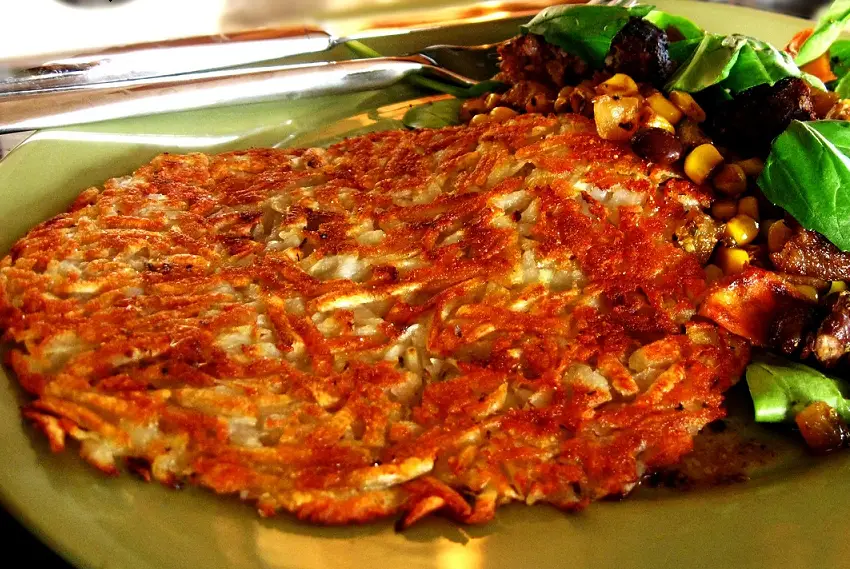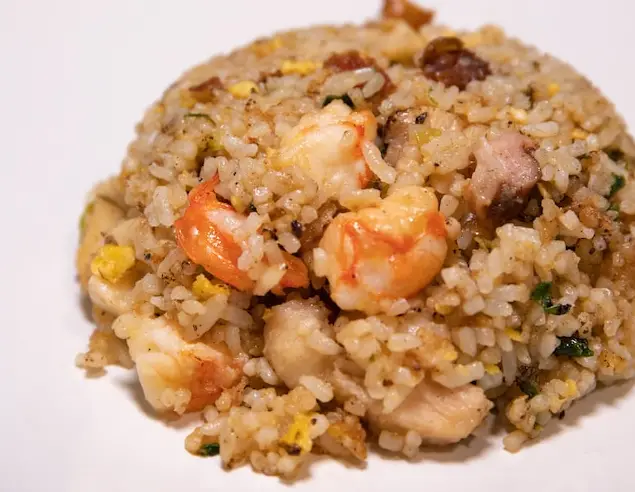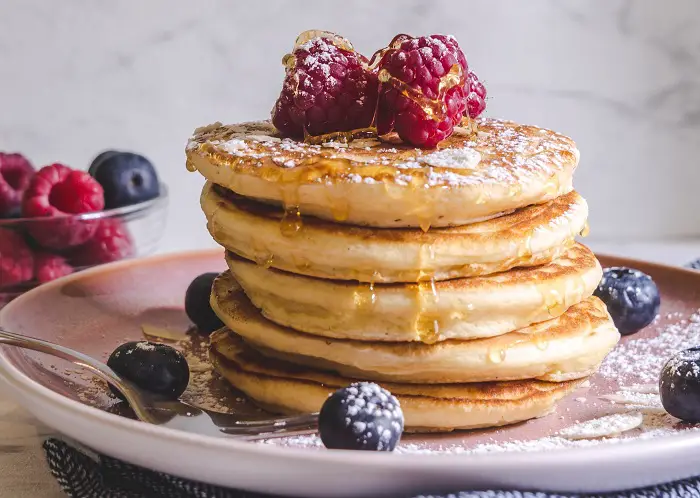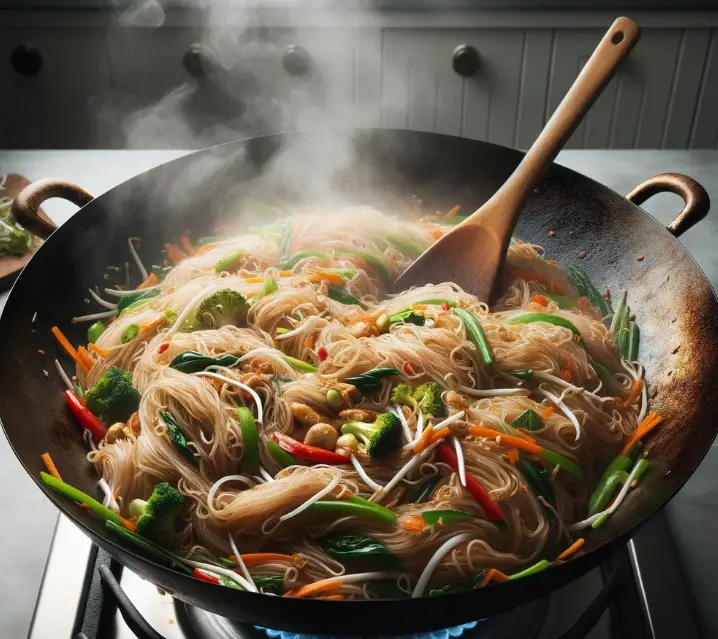The crispiness of your hash browns is primarily affected by two main factors. Firstly, the presence of excess water in the potatoes can prevent them from crisping up. Secondly, not using a sufficiently high cooking temperature can also result in a less crispy outcome.
Why Aren’t My Hashbrowns Crispy?
Too Much Water in the Potatoes
When it comes to making hashbrowns, the water content in potatoes can become quite a challenge. Naturally, potatoes have a lot of water. This might work well for some dishes, but for hashbrowns, it’s a different story. If you’ve ever tried frying something that’s too wet, you’ll know it doesn’t crisp up as it should. Instead of turning golden brown and crispy, the potatoes will steam in the pan, giving you a soft, pale result rather than that delicious crunch everyone loves.
The reason behind this is simple: when wet potatoes hit a hot pan, the moisture inside them quickly turns to steam. This steam then competes with the frying process. As the water tries to evaporate, it cools down the oil, preventing it from maintaining the right temperature to fry the potatoes properly. To put it simply, the steam gets in the way of the browning process. If you want to enjoy perfectly crispy hashbrowns, it’s crucial to dry out the shredded potatoes as much as possible before they go into the pan. This step ensures that they fry correctly and achieve the desired texture and color.
Heat is Too Low
Proper frying is an art that hinges on many factors, one of the most crucial being the heat level. It’s akin to goldilocks’ predicament – not too high, not too low, but just right. When frying hashbrowns, this principle becomes even more pertinent. If the heat is too low, the shredded potatoes won’t “fry” in the traditional sense. Instead, they end up simmering in their own moisture and the oil, a process that’s more akin to stewing than frying.
The consequences of this tepid temperature? Your hashbrowns turn out mushy and soft, devoid of that delightful crunch we all yearn for. They lose that golden-brown hue, which is not just a color but an indication of the Maillard reaction, a process responsible for the delicious flavors and aromas in fried foods. Therefore, the absence of adequate heat not only affects the texture but also the flavor profile of the hashbrowns, making them bland and unappetizing.
How to Fix Soggy Hashbrowns
Now that we understand the problems, let’s explore the solutions.
- Eliminate Excess Moisture: This step is paramount. Once you’ve shredded the potatoes, it’s essential to remove as much water as possible. Use a cheesecloth or paper towels for this purpose. Place the shredded potatoes onto the cloth or paper towel, fold it over, and then squeeze out the water. Patting them dry further ensures that you’ve removed as much moisture as possible. Remember, the drier the potatoes, the crispier they will be once cooked.
- Turn Up the Heat: Overcome the fear of high heat! Use your largest burner and place a 12″ frying pan on it. Crank the heat up to near its maximum capacity. Before adding the shredded potatoes, ensure the oil is adequately hot — it should be at or near its smoke point. It’s a common misconception that frying potatoes require moderate heat. The reality? They need a good blast of high heat. Those who shy away from this often end up with the dreaded mushy hashbrowns.
Achieving the perfect crispy hashbrowns isn’t elusive or challenging. It requires an understanding of the pitfalls and a commitment to two primary principles: high heat and dry potatoes. By ensuring that your frying pan is sufficiently hot and your shredded potatoes are devoid of excess moisture, you can consistently serve up a plate of delightful, crispy hashbrowns.
Ways to Remove Moisture from Potatoes with Less Effort
As mentioned above, achieving crispy hashbrowns begins with the critical step of removing excess moisture from shredded potatoes. Traditional methods like squeezing water out can be labor-intensive, but there are more effortless approaches that can yield equally dry shreds.
- Salad Spinner: A simple and efficient method. After shredding the potatoes, place them inside a salad spinner and spin away. The centrifugal force will help throw off the excess water, leaving the potato shreds relatively dry and ready for the pan.
- Cheese Press: While not commonly found in every kitchen, a cheese press can be an effective way to extract moisture from shredded potatoes. Its pressing mechanism applies even pressure, squeezing out water effortlessly.
- Potato Sandwich Technique: Lay the shredded potatoes in a thin layer on a tea towel positioned on a board. This board should be kept in a sheet pan to collect any dripping water. Cover the potatoes with another tea towel and place the bottom of another sheet pan on top.
Essentially, you’re creating a ‘potato sandwich’ – with the shredded potatoes snugly placed between two towels and sheet pans. For the final touch, place a heavy object on the top sheet pan. The weight combined with gravity efficiently draws out moisture. The duration can vary, but giving it ample time ensures drier shreds. - Night-before Preparation: Steaming potatoes in sizable chunks the night prior, followed by an overnight chill, and shredding them the next day allows for drier shreds. The cooling process helps in reducing moisture.
- Oven Baking: Instead of boiling, which can saturate the potato with water, bake the whole potatoes in the oven. Once cooked, refrigerate them. When cooled, shred and cook. The baking method ensures the potatoes aren’t overloaded with moisture, to begin with.
how to keep hash browns together
If you’ve noticed your hash browns disintegrate or become a crumbly mess while frying, you are not alone. Dive into these proven strategies and techniques, that will ensure your hash browns are not just crispy, but also stay together with every flip.
- Pre-Microwave: Moisture is the primary culprit behind crumbly hash browns. By microwaving the grated potatoes first, you remove excess water and prime them for frying. This simple step begins the cooking process, giving the potatoes a firm structure that’s less likely to disintegrate.
- Latke-Like Methods: Drawing inspiration from the Jewish potato pancakes known as latkes can be beneficial. Incorporating ingredients like eggs and flour adds a binding element. If you’re in the mood to experiment, consider matzoh meal, cornmeal, or panko crumbs as alternatives. They lend a unique texture and assist in cohesion.
- Water Removal: After grating potatoes, it’s essential to remove as much moisture as possible. A potato ricer is excellent for this, but if you don’t have one, a clean towel will suffice. Wrap the potatoes in the towel, twist, and squeeze. A dryer mixture means a crispier outcome.
- Cooking Techniques: When it comes to frying, aim to create a dense mass of potatoes in the skillet. This ensures an even, cohesive cook.
Using ample oil is also crucial, as it gives the hash browns their signature crispy exterior and leaving the hash browns alone until they see crispy edges before flipping.
To facilitate an easy flip, ensure your hash brown’s size corresponds with your spatula. Another pro tip: consider pre-roasting or microwaving potatoes before frying for an even cook inside-out. - Potato Choice: Not all potatoes are suited for hash browns. High starch potatoes, like russets, are the top choice, giving them an advantage in binding and taste over their waxy peers.
- Natural Starch: While additives can help in binding, there’s value in harnessing the potato’s natural starch. By skipping the rinse after grating, you retain this natural binder. It’s a straightforward yet effective approach for cohesion.





